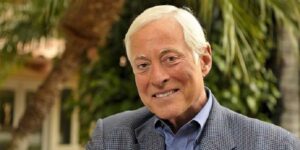Gregory Bateson biografie en boeken

Gregory Bateson (9 mei 1904 – 4 juli 1980) was een Engelse antropoloog, wetenschapper, taalkundige, semioticus en cyberneticus. Zijn bekendste werken omvatten onder meer Steps to an Ecology of Mind (1972) en Mind and Nature (1979). Gregory Bateson had een sterke interesse voor systeemtheorie, een interdisciplinaire vorm van studie en onderzoeken. Elk systeem heeft causale grenzen, die beïnvloedt worden door context en gedefinieerd door structuur, functie en rol. Hij ontwikkelde ook de double bind theory, een theorie over het ontstaan van schizofrenie en post-traumatische stress syndroom.
De biografie van Gregory Bateson
Gregory Bateson werd geboren in Grantchester, Engeland in 1904. Hij was de derde en jongste zoon van Caroline Beatrice Durham en geneticus William Bateson. Hij werd vernoemd naar Gregor Mendel, een Oostenrijkse monnik die de moderne wetenschap van genetica heeft gesticht.
De jonge Bateson ging naar de Charterhouse School tussen 1917 en 1921, en behaalde in 1925 een Bachelor of Arts in biologie aan St. John’s College in Cambridge.
Het leven van Bateson werd sterk beïnvloed door de dood van zijn twee broers, John Bateson en Martin Bateson. John sneuvelde tragisch in de Eerste Wereldoorlog. De tweede broer pleegde zelfmoord, gedreven door een conflict met zijn vader over de ambitie om dichter en toneelschrijver te worden en een teleurstelling in de liefde. Na deze gebeurtenissen vielen de torenhoge verwachtingen van de ouders op de schouders van Gregory.
Loopbaan van Gregory Bateson
Vanaf 1928 gaf Gregory Bateson taalkunde aan de Universiteit van Sydney. Vanaf 1931 tot 1937 was hij een fellow van de St. John’s College in Cambridge. Gedurende de Tweede Wereldoorlog zat hij in de Stille Zuidzee, in Nieuw-Guinea en Bali. Hier hield hij zich voornamelijk bezig met antropologie.
In de jaren 1940 werkte Bateson voornamelijk aan het uitbreiden van de systeemtheorie en cybernetica naar de sociale en gedragswetenschappen. Hij was aanvankelijk terughoudend met werken voor overheden, maar hij sloot zich uiteindelijk toch aan bij de inlichtingendienst Office of Strategic Services (OSS), een van de eerste inlichtingendiensten van de Verenigde Staten.
Hij besteedde een groot deel van de oorlog aan het ontwerpen van propagandaradio-uitzendingen en werd ingezet bij geheime operaties in Thailand, Birma, China, India en Ceylon. Hij gebruikte zijn theorieën over menselijk gedrag om onenigheid tussen zijn vijanden te bevorderen. Hij had later veel last van zijn ervaringen in de oorlog. Ook werd hij het niet eens met zijn vrouw over de vraag of wetenschap gebruikt zou moeten worden in de oorlog of niet.
In 1956 werd Gregory Bateson een genaturaliseerd staatsburger van de Verenigde Staten. Hij was tevens een van de eerste oorspronkelijke leden van de kerngroep van de Macy-conferenties in Cybernetica. In de jaren zeventig gaf hij les aan het Humanistic Psychology Institute in San Francisco, omgedoopt tot de Saybrook University. In 1972 trad hij toe tot de faculteit van Kresge College aan de University of California, Santa Cruz.
In 1976 werd hij fellow van de American Academy of Arts and Sciences. Hij werd ook benoemd tot lid van de Regents of the University of California, door de gouverneur van Californië, Jerry Brown. Bateson bracht het laatste gedeelte van zijn leven door met het ontwikkelen van een metawetenschap van epistemologie om verschillende vormen van systeemtheorie samen te brengen.
Privéleven
Van 1936 tot 1950 was Gregory Bateson getrouwd met Margaret Mead, een Amerikaanse antropologe. Samen hadden ze een dochter, Mary Catherine Bateson, die zelf ook antropologe werd. Bateson scheidde van Mead in 1950. Een jaar later trouwde hij met Elizabeth Betty Sumner, een dochter van de bisschop van Oregon, Walter Taylor Sumner. Samen kregen ze een zoon, John Sumner Bateson en een tweeling, die kort na de geboorte stierf. In 1957 scheidde Bateson van Sumner en trouwde Bateson voor de derde keer, dit keer met therapeut en maatschappelijk werker Lois Cammack. Ze kregen een dochter, Nora Bateson.
Bateson stief op 4 juli 1980. Hij werd 76 jaar oud. Hij stief in het pension van het San Francisco Zen Center. Er is later een roman geschreven over zijn relaties en zijn tijd in de Tweede Wereldoorlog: Euphoria uit 2014 van Lily King.
Bekende quotes
- “A major difficulty is that the answer to the Riddle of the Sphinx is partly a product of the answers that we already have given to the riddle in its various forms.”
- “A man walking is never in balance, but always correcting for imbalance.”
- “After mastery comes artistry and not before.”
- “All experience is subjective.”
- “But epistemology is always and inevitably personal. The point of the probe is always in the heart of the explorer: What is my answer to the question of the nature of knowing?”
- “Creative thought must always contain a random component.”
- “Every move we make in fear of the next war in fact hastens it.”
- “If we pursue this matter further, we shall be told that the stable object is unchanging under the impact or stress of some particular external or internal variable or, perhaps, that it resists the passage of time.”
- “In the transmission of human culture, people always attempt to replicate, to pass on to the next generation the skills and values of the parents, but the attempt always fails because cultural transmission is geared to learning, not DNA.”
- “Information is a difference that makes a difference.”
- “Interesting phenomena occur when two or more rhythmic patterns are combined, and these phenomena illustrate very aptly the enrichment of information that occurs when one description is combined with another.”
- “It is impossible, in principle, to explain any pattern by invoking a single quantity.”
- “It is of first-class importance that our answer to the Riddle of the Sphinx should be in step with how we conduct our civilisation, and this should in turn be in step with the actual workings of living systems.”
- “It is to the Riddle of the Sphinx that I have devoted fifty years of professional life as an anthropologist.”
- “It is, I claim, nonsense to say that it does not matter which individual man acted as the nucleus for the change. It is precisely this that makes history unpredictable into the future.”
- “It takes two to know one.”
- “Language commonly stresses only one side of any interaction.”
- “Logic can often be reversed, but the effect does not precede the cause.”
- “Logic is a poor model of cause and effect.”
- “Members of weakly religious families get, of course, no religious training from any source outside the family.”
- “Money is always transitively valued. More money is supposedly always better than less money.”
- “Number is different from quantity.”
- “Numbers are the product of counting. Quantities are the product of measurement. This means that numbers can conceivably be accurate because there is a discontinuity between each integer and the next.”
- “Official education was telling people almost nothing of the nature of all those things on the seashores, and in the redwood forests, in the deserts and in the plains.”
- “Play is the establishment and exploration of relationship.”
- “Rather, for all objects and experiences, there is a quantity that has optimum value. Above that quantity, the variable becomes toxic. To fall below that value is to be deprived.”
- “Science, like art, religion, commerce, warfare, and even sleep, is based on presuppositions.”
- “Surrender to alcohol intoxication provides a partial and subjective shortcut to a more correct state of mind.”
- “Synaptic summation is the technical term used in neurophysiology for those instances in which some neuron C is fired only by a combination of neurons A and B.”
- “The creature that wins against its environment destroys itself.”
- “The major problems in the world are the result of the difference between how nature works and the way people think.”
- “The meaning of your communication is the response you get.”
- “The only way out is spiritual, intellectual, and emotional revolution in which, finally, we learn to experience first-hand the interloping connections between person and person, organism and organism, action and consequence.”
- “There are times when I catch myself believing that there is such a thing as something; which is separate from something else.”
- “There is a strong tendency in explanatory prose to invoke quantities of tension, energy, and whatnot to explain the genesis of pattern. I believe that all such explanations are inappropriate or wrong.”
- “To think straight, it is advisable to expect all qualities and attributes, adjectives, and so on to refer to at least two sets of interactions in time.”
- “We can never be quite clear whether we are referring to the world as it is or to the world as we see it.”
- “We do not know enough about how the present will lead into the future.”
- “What is the pattern that connects the crab to the lobster and the primrose to the orchid, and all of them to me, and me to you?”
- “Wisdom is the intelligence of the system as a whole.”
- “Without context words and actions have no meaning at all.”
- “Yes, metaphor. That’s how the whole fabric of mental interconnections holds together. Metaphor is right at the bottom of being alive.”
Boeken en andere publicaties van Gregory Bateson
- 2017. Communication: The social matrix of psychiatry. Routledge.
- 1989. The individual, communication, and society: Essays in memory of Gregory Bateson. Cambridge University Press.
- 1985. A timely rereading of Naven: Gregory Bateson as oracular essayist. Representations, 12, 66-82.
- 1975. Some components of socialization for trance. Ethos, 3(2), 143-155.
- 1972. The logical categories of learning and communication. Steps to an Ecology of Mind, 279-308.
- 1972. An ecology of mind. New York: Ballantine.
- 1971. The cybernetics of “self”: A theory of alcoholism. Psychiatry, 34(1), 1-18.
- 1971. A re-examination of “Bateson’s Rule”. Journal of Genetics, 60, 230-240.
- 1970. Form, substance and difference. Essential readings in biosemiotics, 501.
- 1970. Bali: The value system of a steady state. In Traditional Balinese Culture (pp. 384-402). Columbia University Press.
- 1967. Cybernetic explanation. American behavioral scientist, 10(8), 29-29.
- 1963. The role of somatic change in evolution. Evolution, 529-539.
- 1963. A note on the double bind- 1962. Family process, 2(1), 154-161.
- 1961. Perceval’s narrative: A patient’s account of his psychosis, 1830-1832.
- 1960. The group dynamics of schizophrenia.
- 1958. Naven: A survey of the problems suggested by a composite picture of the culture of a New Guinea tribe drawn from three points of view (Vol. 21). Stanford University Press.
- 1956. Toward a theory of schizophrenia. Behavioral science, 1(4), 251-264.
- 1955. A theory of play and fantasy. Psychiatric research reports.
- 1942. Morale and national character.
- 1942. Balinese character: A photographic analysis. New York, 17-92.
- 1941. IV. The frustration-aggression hypothesis and culture. Psychological Review, 48(4), 350.
- 1941. Experiments in thinking about observed ethnological material. Philosophy of Science, 8(1), 53-68.
- 1935. 199. culture contact and schismogenesis. Man, 178-183.
- 1932. Social structure of the Iatmül people of the Sepik River (concluded). Oceania, 2(4), 401-453.
Citatie voor dit artikel:
Janse, B. (2023). Gregory Bateson. Retrieved [insert date] from Toolshero: https://www.toolshero.nl/bekende-auteurs/gregory-bateson/
Oorspronkelijke publicatiedatum: 03/04/2023 | Laatste update: 18/04/2023
Wilt u linken naar dit artikel, dat kan!
<a href=”https://www.toolshero.nl/bekende-auteurs/gregory-bateson/”>Toolshero: Gregory Bateson</a>












